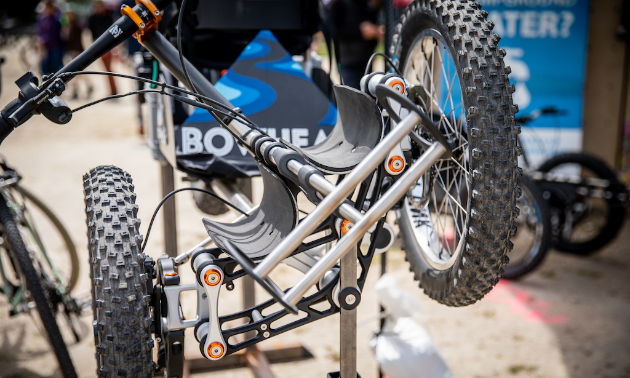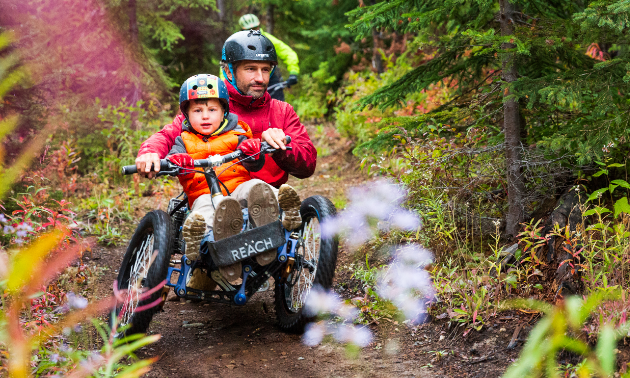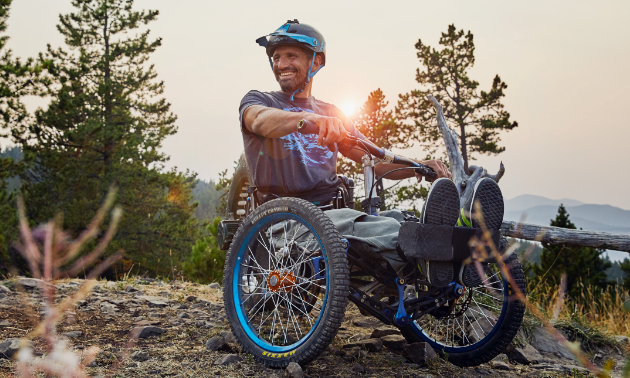What would you do if you took a spill and broke your back, leaving you paralyzed? It’s not something any of us want to think about but, alas, it happens. Christian Bagg was 20 years old when a snowboarding accident had him staring down this reality. To overcome his newfound challenge, he put himself to work.
“The mindset of solving my own problems happened while I was in the hospital,” Bagg said. “I was doing my apprenticeship in machining at the time at the University of Calgary in the engineering department shop. My co-workers in the shop made a hydraulic lift for my house so I could get up the four stairs to the kitchen. I realized quickly that I was going to be dependent on technology for everything I needed to do going forward.”
When Bagg broke his back 23 years ago, there weren’t many equipment options for people who had a spinal cord injury. His height, six feet, four inches (193 centimetres), meant he couldn’t even find a suitable wheelchair to fit him properly. Bagg decided to put his machining knowledge to good use and built himself a wheelchair within a year of breaking his back.
“Once I built one chair, I became a wheelchair builder,” he said. “It was serendipitous in a way. If I had to pick a skillset, it’s a good one to have for the situation I found myself in.”
Tinkering to perfection
Being an outdoor enthusiast, Bagg toyed around with equipment that would get him outside. One of his first post-injury activities was cross-country sit-skiing. He often ran into problems with off-camber terrain being too steep going up or down.
“I kept tripping into treewells,” he said. “I felt like I was dragging other people down.”
To combat this problem, Bagg came up with an articulating framework, a parallelogram that would allow him to lean to one side. When he hit a side slope, the device would let one ski drop low and one ski come up high.

The Bowhead Reach’s articulating framework is the key to its success. — Photo courtesy Christian Bagg
“That was the eureka moment,” said Bagg. “I flipped it upside down and swapped the skis for wheels. That cracked the code for getting outside in the summer months. I’ve got a trike that operates like a bike: one wheel in the back, two wheels up front with a parallelogram articulating framework. I can be on a 30-degree side slope and still be level. No other adaptive bike or vehicle does it. Even three-wheeled motorbikes, they lean and steer at the same time. What’s unique about this is that the leaning and steering are not connected. They’re separate and controlled by the rider. That’s super important.”
Bagg turned his invention into a product, the Bowhead Reach. The Bowhead Reach is sold by Bowhead Corp., where Bagg is the chief technical officer (CTO).
More power
Even though Bagg was always an outdoorsy guy, he was never into motorized recreational vehicles. Since he worked with his hands, he preferred his creations to function that way as well. His wheelchairs were manual and his trikes were operated via hand crank. He was content with his design until one persistent customer changed his mind.
“One of the people who was going to buy one was adamant that I put in an electric motor,” said Bagg. “I broke down and put one on. I tried it and I’ve never used a hand crank since. It changed the experience. It went from this grunting cardiovascular expedition into enjoying the outdoors.
“That was the foundation for all future iterations. We keep making things better and improving as we go.”
The Bowhead Reach is powered by a 300-watt electric motor with lithium ion batteries. Thanks to the parallelogram articulating framework, the Reach can go 50 km/h (31 m.p.h.) into a turn without toppling over. With its narrow design, it can manoeuvre through single track trails, meaning that Bagg can keep up with everyone else.
“The feeling of holding people back, that was gone,” said Bagg. “I wanted to be immersed in what they were in. I didn’t want the outing to be about me.”

Christian Bagg takes his son, Oliver, with him on outings on his Bowhead Reach. — Photo courtesy Christian Bagg
Adding a motor to the Bowhead Reach also meant that Bagg could bring a passenger with him on his expeditions into the woods.
“When we go hiking or biking, my son sits on my lap and we tear through nature laughing our heads off,” he said.
Through Bagg’s determination and ingenuity, he’s managed to overcome his disability and provide invigoration for those who otherwise would’ve had to say goodbye to the great outdoors.
“The Reach is more than just a recreational vehicle to me and the others that have them,” Bagg said. “It’s an integral part of our lives.”








Comments